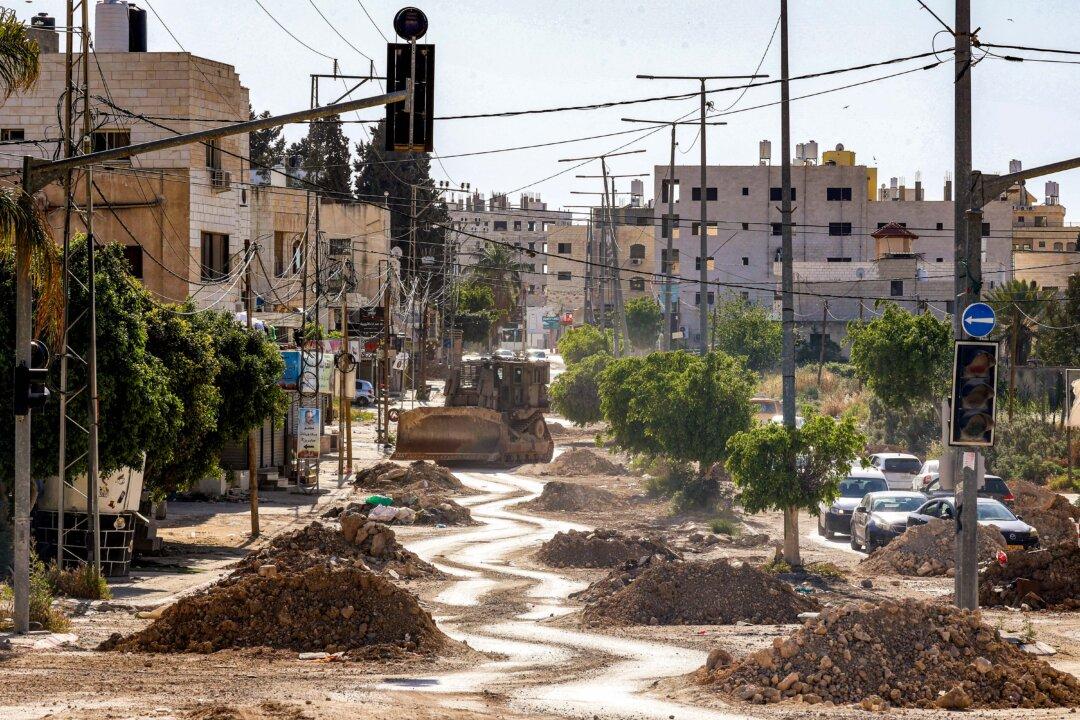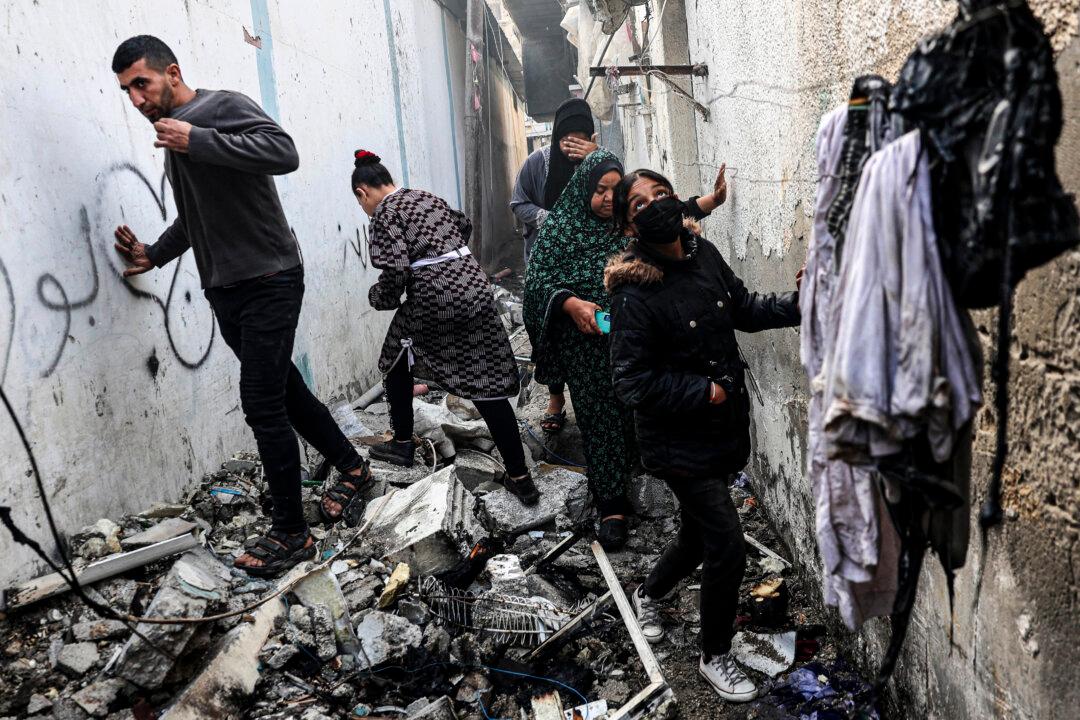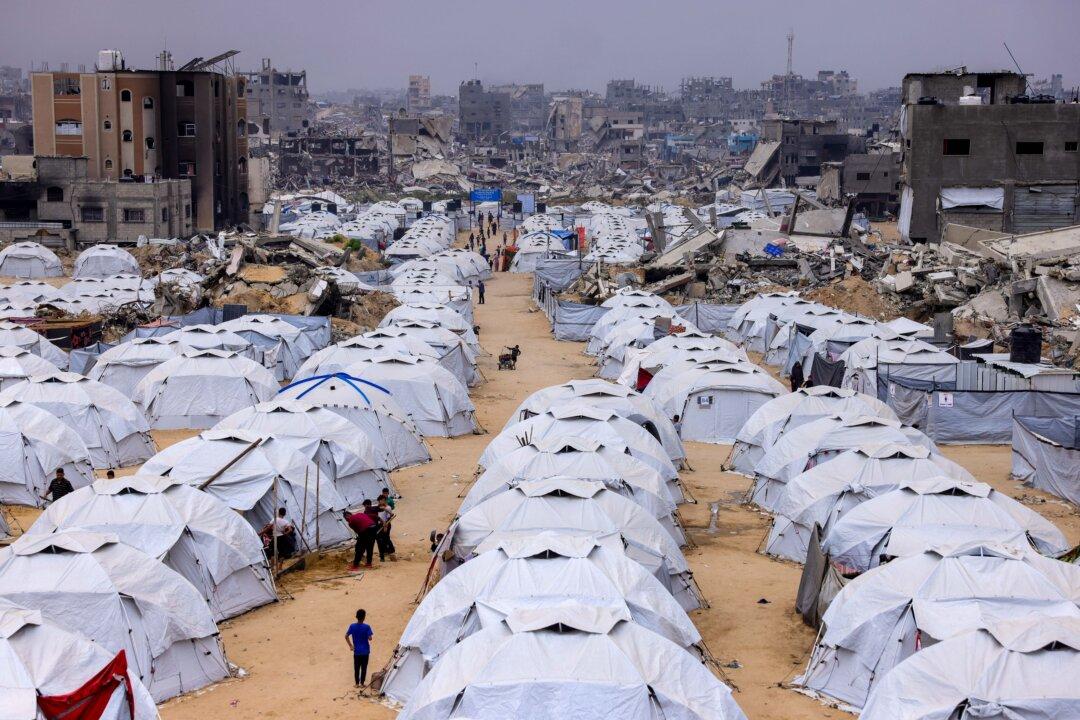The Israeli military says it has recovered five hostage bodies from Khan Yunis in the southern Gaza Strip in the course of its ongoing offensive.
The Israel Defense Forces (IDF) said in a public statement that the five—a woman murdered on Oct. 7 and four soldiers whose bodies were taken to Gaza after they fell fighting Hamas in Israel that day during the terrorists’ surprise attack—were found on July 24.
The bodies were identified as those of Maya Oren, a 56-year kindergarten teacher killed during the attack on the Nir Oz kibbutz; two reservists, Sgt. Maj. Ravid Aryeh Katz and Master Sgt. Oren Goldin; and two conscripts, Staff Sgt. Tomer Ahimas and Sgt. Kiril Brodski.
The IDF said they found the bodies in a tunnel beneath what the army previously designated as a humanitarian zone, “an area for Gazan civilians to move away from the battlefield and receive humanitarian aid and shelter.” Israel has long accused Hamas as using its own civilians as human shields, a war crime.
The IDF said it developed the intelligence locating the bodies through interrogation of captured terrorists. Once it had the information, the IDF said, “the forces located an underground tunnel shaft leading to a tunnel approximately 200 meters in length and 20 meters deep with several rooms where the hostages were located.”
“This is a further example of how Hamas cynically exploited the humanitarian area and used it to hold captive Israelis killed and abducted on Oct. 7.”
One Third of Hostages Estimated Dead
The IDF has now reduced from 120 to 115 the number of hostages, dead or alive, that Hamas still holds. The IDF estimates a third of those are dead. The terrorist group took 255 hostages on Oct. 7, Prime Minister Benjamin Netanyahu told Congress in Washington on July 24.Israeli Defense Minister Yoav Gallant told troops in Rafah on July 23 that Israel was close to defeating Hamas militarily, according to a statement from his office.
“We are eliminating Hamas as a military organization,” he told the troops. “We’re creating a situation that will allow us to make a deal to free our hostages.”
But the terrorist group has hung on longer than expected. The IDF had to undertake the Khan Yunis offensive because Hamas was operating from and firing rockets at Israel from Central Gaza areas the IDF previously deemed pacified.

A still image taken from a video released by Hamas shows what it says are its fighters firing mortar shells at Israeli forces during Israel's ground offensive, in a location given as Gaza, obtained by Reuters on Nov. 7, 2023. Hamas Military Wing/Handout via Reuters
Hamas on July 24 launched projectiles from Khan Yunis’s humanitarian area, the IDF said. The rockets fell short of reaching Israeli territory and instead fell near the UNRWA Al Qarara school, killing two civilians and injuring others, the IDF said.
Hamas seems to be transitioning to guerrilla hit-and-run tactics by smaller groups, according to Palestinian and Israeli military and intelligence sources.
The groups appear more lightly armed, usually without the body armor or battle fatigues worn by Hamas terrorists who struck Israel on Oct. 7.
As Israel has destroyed their communications network, they are often unable to communicate with each other and lack central coordination of strategy. Much of the vast tunnel network—built by Hamas with millions of dollars of diverted foreign aid material—has been destroyed or compromised.
Their strategy now seems to be to ensure the group’s survival, tie up Israeli forces and inflict losses.
The Associated Press and Reuters contributed to this report.







